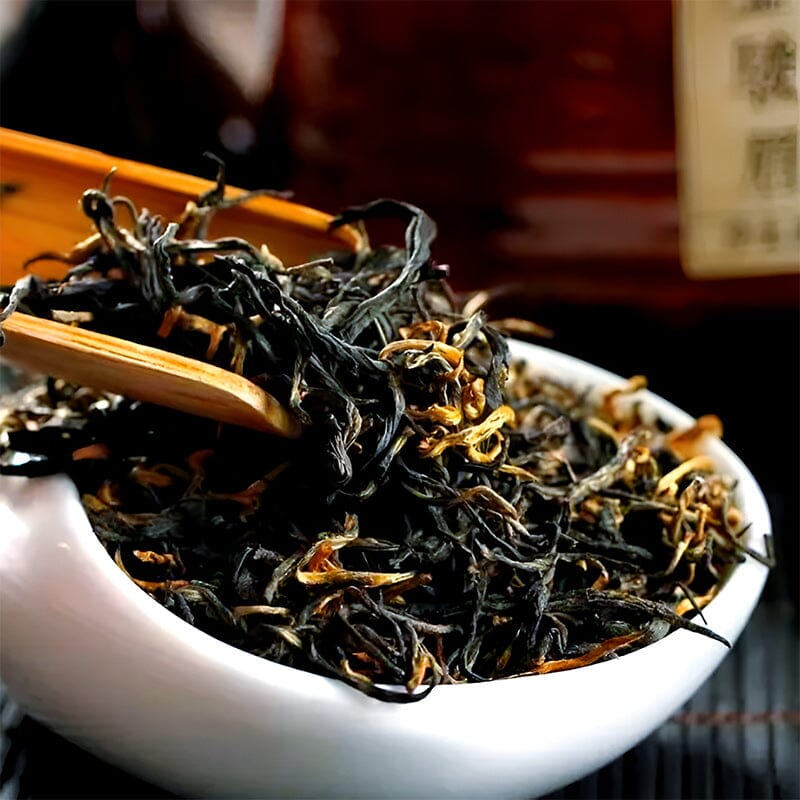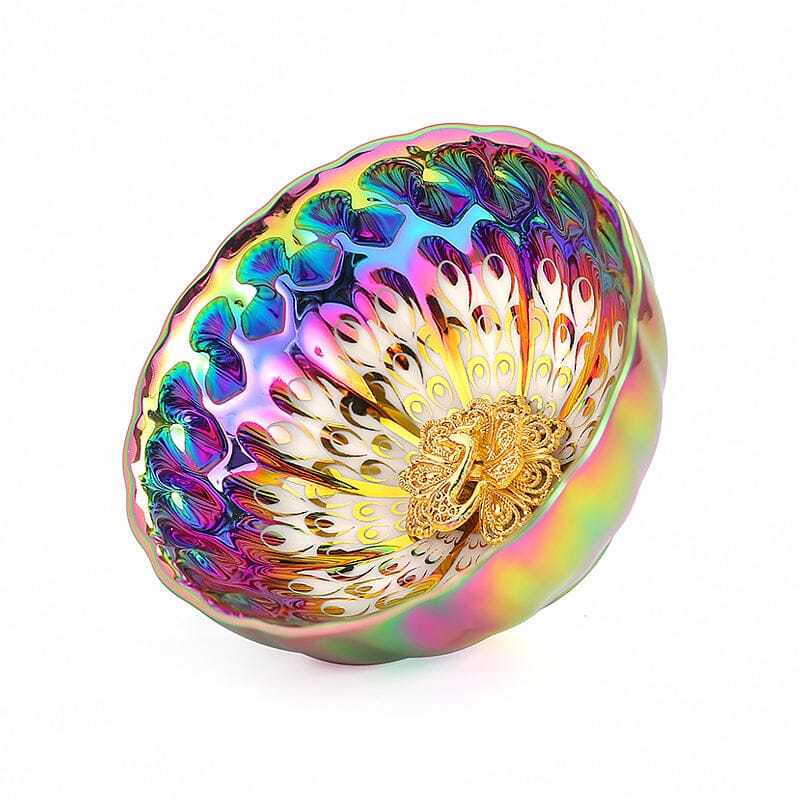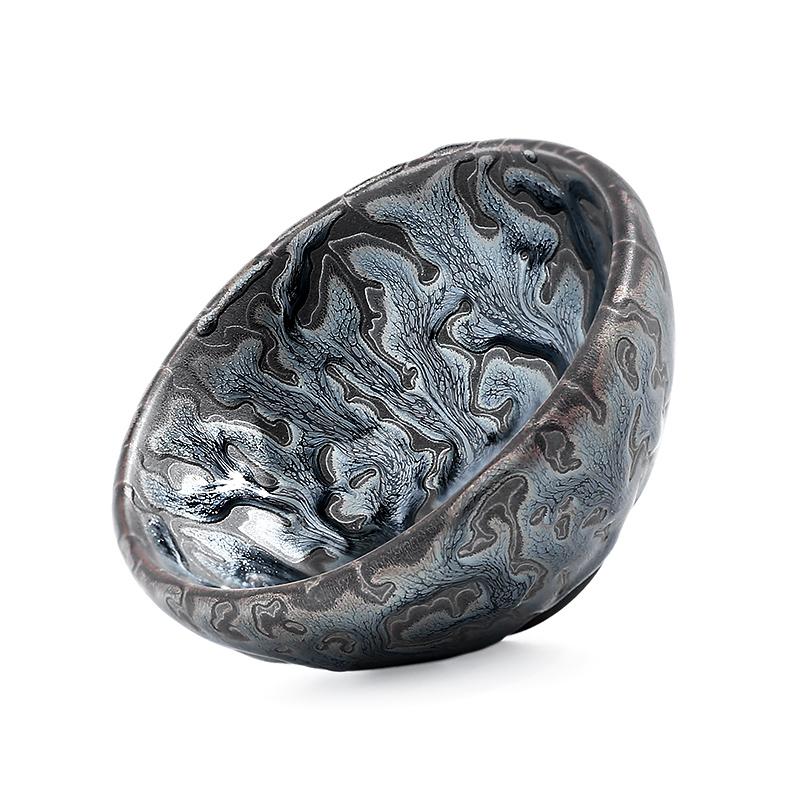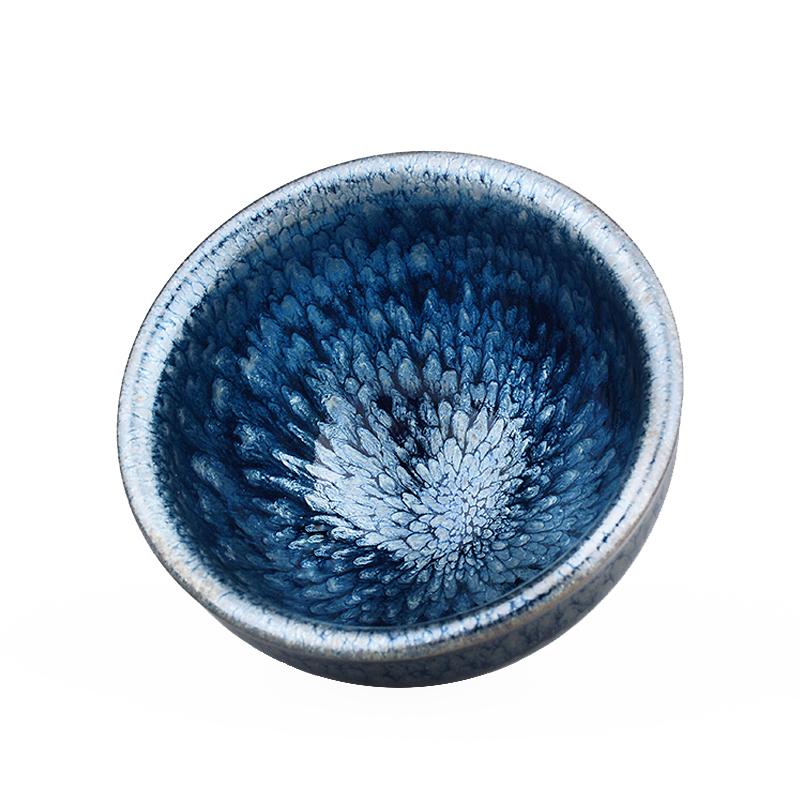The art of brewing Jinjunmei goes beyond replicating basic procedures; it lies in a profound understanding of tea properties, precise control of mindset, and natural expression of tea dao spirit. Once techniques are mastered, the core of advanced practice becomes adjusting parameters according to tea type, endowing tea soup with soul through focused intention, and elevating brewing to the realm of "Dao Tea". This article will delve into black tea classification and brewing adaptability, core essentials of professional brewing, the impact of mindset on tea soup, and the connotation of tea dao spirit, helping you progress from "able to brew" to "brewing well" and further to "brewing with realm" in Jinjunmei preparation.
1. Black Tea Classification and Brewing Adaptability
(1) Classification Features and Core Differences
Black tea with more bud tips: Represented by Jinjunmei, the raw material is single buds or one-bud-one-leaf. The buds are plump with rich internal substances (high in amino acids and aromatic compounds), offering a sweet and smooth taste with elegant aromas (predominantly floral, fruity, and honey notes);
Black tea with larger leaves: Such as Keemun Black Tea (Qihong) and Fujian Black Tea (Gongfu black tea category), made mainly from one-bud-two-leaves to three-leaves. The leaves expand significantly when brewed, with slightly higher contents of tea polyphenols and caffeine, and richer aromas (Keemun's "Keemun fragrance", Fujian black tea's potato or jujube notes).
(2) Precise Adaptation of Temperature and Tea Awakening
Black tea with more buds (e.g., Jinjunmei): Due to delicate buds and thin cell walls, the water temperature should be controlled at 75-80℃ to avoid damaging aromatic substances and amino acids in buds with high heat, which could cause a cooked taste or astringency. The awakening time should be short (10-15 seconds), requiring only a small amount of hot water to moisten the buds and awaken their activity; excessive awakening may lead to premature flavor loss.
Black tea with larger leaves (e.g., Keemun): With thicker leaves and abundant fibers, 85-90℃ water is needed to fully stimulate internal substances. The awakening time should be extended to 20-30 seconds to allow hot water to penetrate leaf tissues, laying the foundation for subsequent flavor release.

2. Core Essentials of Professional Brewing: Return from "Form" to "Quality"
(1) Focus as the Foundation of Professionalism
Focus objects: Throughout the process, focus on water flow speed (like "thin silk" during injection), soup serving rhythm (steady and uniform during pouring), and container status (changes in pot temperature, gradual color transformation of tea soup), making every action serve the core goal of "stimulating tea properties";
Focus effects: When highly focused, the brewer can keen ly perceive subtle changes in the tea soup – such as whether the tea leaves roll uniformly during water injection and whether the water flow from the spout is consistent during serving. These details directly affect the clarity and concentration of the tea soup;
Warning from counterexamples: Distraction or impatience can lead to deformed movements (e.g., erratic water injection speed, uncontrolled serving time), resulting in issues like "first strong then weak" or "uneven bitterness" in the tea soup, making it difficult to achieve good flavor even with excellent raw materials.
(2) Tea Soup Quality as the Sole Standard
Taste: Whether the entrance is sweet and smooth, without obvious astringency or off-flavors, and whether the aftertaste is natural and long-lasting;
Aroma: Whether the aroma is clear and intense (with distinct floral and fruity notes for Jinjunmei) and whether it "integrates into the soup" (aroma merges with the tea soup rather than floating on the surface);
Smoothness: Whether the tea soup flows smoothly in the mouth and throat, with a "lingering sensation" (remaining warmth in the throat after swallowing).
External techniques are tools serving these intrinsic qualities; flashy actions without "deliciousness" are merely futile performances.3. The Essence of Tea Brewing Work: Treating Tea with Ingenuity and Calming the Mind
(1) Primary Task: Finding the Optimal Brewing Method
Dynamic adjustment: Adjust brewing parameters according to seasons and environmental changes (e.g., reduce serving time for the first two infusions in humid rainy seasons to avoid a stuffy taste);
Ultimate goal: Achieve a "comfortable and pleasant" taste for the tea soup – not a fixed standard but a "flavor resonance" between the brewer and tasters.
(2) Mindset Cultivation: Invisible Force Shaping Tea Soup Flavor
Mindset requirements: Maintain a "relaxed and comfortable" state, avoiding anxiety, impatience, or perfunctoriness. Psychological studies show that calm people have steady breathing and minimal hand tremors, enabling more precise control of water flow and time;
Preliminary preparation: Cultivate mindset through a "relaxation trilogy": listening to soothing music (e.g., guqin, natural white noise) to calm distractions, burning incense (agarwood or sandalwood) to purify air and mind, and taking 3-5 deep breaths to focus attention on the present;
Environmental synergy: The tea room should be solemn and peaceful – with soft lighting (avoiding direct strong light) and no noise interference (turn off phones or set to silent), allowing both brewing and tasting to immerse in a "focused field".

4. Ancient Tea Brewing Wisdom: Reverence Behind Rituals
(1) Bathing and Changing Clothes: Unity of External Cleanliness and Internal Purity
External cleanliness: Remove body dust through bathing and change into neat clothes, showing respect for tea activities;
Internal purity: The ritual itself is a practice of "gathering the mind" – distractions fade as water flows over the skin, and changing clothes reminds oneself to "face tea with a new state", achieving the transformation of "pure body leads to pure mind".
(2) Focused Control of Links
Tea taking: Gently stir tea with a spoon, avoiding crushing buds by force, showing cherish for raw materials;
Water injection: Precisely control water flow height and angle, "high pouring to stimulate aroma, low pouring to moisten leaves", adjusting techniques according to tea type;
Brewing: Accurate timing (using water clocks or incense in ancient times), without arbitrary shortening or extension, respecting the natural release rhythm of tea leaves.
5. Tea Evaluation: Perceiving the "Life Cycle" of Tea
(1) Evaluation Standards and End Signals
Color change: Jinjunmei's initial infusion has a bright golden color, gradually deepening to orange-yellow with more infusions. A sudden lightening or turbidity indicates that internal substances are about to be exhausted;
Aroma attenuation: High-quality Jinjunmei has the strongest aroma (clear floral and fruity notes) in the first 3-4 infusions, with aroma gradually fading after the 5th infusion. Be alert when "watery taste" or "stale smell" appears, as it nears the end;
Taste signal: When obvious "stalk flavor" (woody taste, prominent astringency) appears in the tea soup, it indicates that the tea has fully released internal substances. Continued brewing will only produce a bland or off-flavor, so brewing should stop at this point.
(2) Importance of Recording and Adjustment
Recording points: Record tea amount, water temperature, infusion times for each brew, and flavor characteristics (e.g., "honey aroma prominent in 3rd infusion, aftertaste weakened in 5th");
Adjustment logic: Optimize future brewing based on records – reduce tea amount or shorten early infusion times if the first two infusions are too strong; fine-tune water temperature (±3℃) or extend awakening time if aroma is insufficient;
Long-term value: Accumulated records form a personal "tea property database", enabling quick adaptation to different batches and years of Jinjunmei, achieving precise "one tea, one strategy" brewing.

6. Mood During Brewing: Invisible Force Endowing Soul to Tea Soup
(1) Balance Between Focus and Form
Formal focus: Control stability in water flow and utensil operation, making every action "rule-based" (e.g., steady wrist during injection, consistent spout angle during serving);
Spiritual focus: Immerse consciousness fully in tea affairs without distraction – feel the subtle sound of tea leaves unfolding when hot water is injected, observe the rhythm of tea soup swirling in the fairness cup. This "unity of body and mind" influences the soup through energy transmission.
(2) Mood Integration and "Unity of Person and Tea"
External scene association: Visualizing "snow mountain spring" during brewing may give the soup an extra "coolness"; integrating "forest morning mist" imagery can make the aroma more vivid;
Music resonance: Matching appropriate music (e.g., soothing Zen music, natural white noise) calms the mood, significantly enhancing the soup's sweetness (Jinjunmei's floral and fruity notes integrate better with tea soup when paired with guqin music);
Case evidence: Tea lovers often share the experience of "Tea Fairy offering flat peaches" – when brewing with pure joy and focusing on imagining "peach sweetness", the soup surprisingly presents similar fruity aroma and sweetness, vividly illustrating how "mindset endows soul to tea soup".
7. Dao Tea: Elevation from Brewing to "Dao"
(1) Essential Difference Between Tea Dao and Mere Brewing
Mere brewing: Targets "deliciousness", focusing on optimizing technical parameters;
Dao Tea realm: Uses tea as a medium to express thoughts and emotions, just as painters convey feelings through brushstrokes and poets express aspirations through words, tea masters transmit mood and insights through tea soup.
(2) Zen Tea Realm of Unity of Heaven and Humanity
Following nature: Respecting Jinjunmei's growth laws (e.g., understanding the "cloud and mist nourishment" of its high-mountain raw materials), avoiding forced intervention in tea properties during brewing (not pursuing "excessive infusions" or "strange flavors");
Energy resonance: Synchronizing personal energy with the tea's "life energy" by adjusting breathing and calming the mind (e.g., feeling the transformation of tea from fresh leaves to dry tea, appreciating the wisdom of natural cycles);
Emotional transmission: In successful Dao Tea activities, tea soup becomes an emotional medium – conveying tranquility to the anxious, joy to the sad. This "wordless communication" is the value of tea dao beyond technique.

8. Knowledge Summary: Core Points of Advanced Jinjunmei Brewing
The advancement of Jinjunmei brewing is a practice of "understanding tea properties, cultivating mindset, and realizing tea dao". From adjusting temperature according to buds and leaves, to controlling each step with focus; from optimizing parameters through recording, to endowing the soup with soul through mood; ultimately elevating brewing to "Dao Tea" and making the soup a carrier of emotions and thoughts. There is no fixed "standard answer" here, only reverence for tea, sensitivity to details, and awareness of mindset – when you truly achieve "tea in the heart, heart in the tea", every drop of Jinjunmei's soup will flow with your unique flavor and realm.









Deel:
Brewing Black Tea – Jinjunmei (Part I): A Basic Guide from Tea Table Setup to Tasting
Brewing Keemun Black Tea: A Complete Guide from Cognition to Tasting